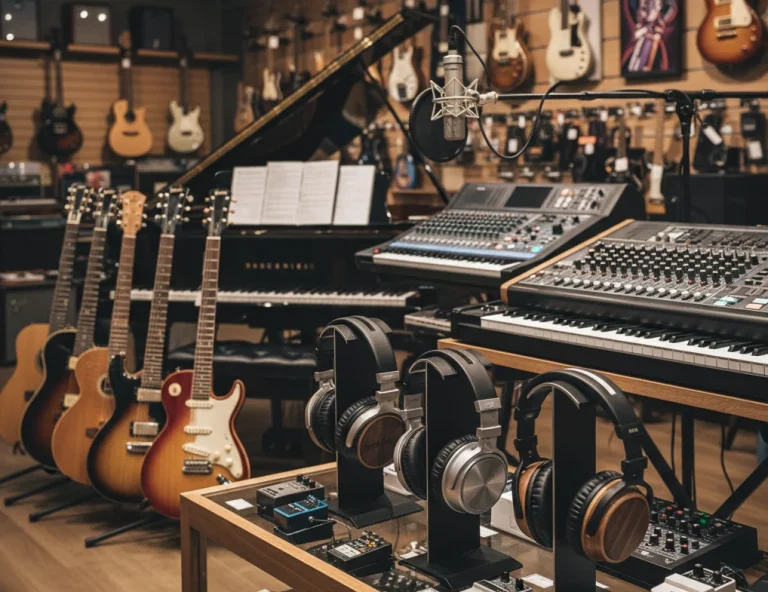All Topics
- Alchemizing Music Concepts for Students
- Artist Spotlight
- artium gift card
- Artium Maestros
- Artium News
- buying guide
- Carnatic Music
- Devotional Music
- Editorials by Ananth Vaidyanathan
- Film Music
- Guitar
- Hindustani Classical Music
- Indian Classical Music
- Indian Folk Music
- Insights
- Instruments
- Karaoke Singing
- Keyboard
- Kids Music
- maestros
- Music Education
- Music for Kids
- Music Industry
- Music Instruments
- Music Legends
- Music Theory
- Music Therapy
- Piano
- piano guide
- Success Stories
- Tamil Film Music
- Telugu Film Music
- Time Theory
- Tools
- Uncategorized
- Vocal Singing
- Vocals
- western classical music
- western music
- Western vocal music
How to Use the Metronome? A Beginner’s Guide
How to Use the Metronome? A Beginner’s Guide

Table of Contents
Something extremely important for honing your musical talents is to master timings. Staying on beat with the song and the rhythm is necessary and to help you out, we would like to introduce you to the Metronome. This is a tool that helps you stay on beat and improve your timing. At Artium Academy, we’ll help you understand what a metronome is and share a few tips and tricks along the way.
What is a Metronome?
A metronome is a tool that helps musicians stay on beat and keep a consistent rhythm while playing an instrument. Take a small clock that makes a ticking sound with each interval. In the case of metronomes, each tick represents a beat. Adjusting the speed of the ticks to your need, whether it’s faster or slower, provides you with a great range of tempos.
Metronomes are used for a variety of instruments, such as guitars, pianos and more. Vocalists use them as well. As you can see, a metronome is extremely helpful. This helps in maintaining your timings, beats and rhythm, and assists in getting better at producing music.
You may have seen a metronome in your local music store or your music classes. The traditional version consists of a pendulum swinging back and forth, with clicks coming in at regular intervals. It looks like a small pyramid or a small box with a metal arm that swings back and forth, producing clicks as it moves. However, with modern technology, digital versions of metronomes exist. High-quality apps that accurately display the necessary data are now on the tip of your fingers.

What Does BPM (Beats Per Minute) Mean?
BPM or Beats Per Minute highlights how fast or slow a song plays. If a song has a higher BPM like 120 BPM, it shows that it has a high tempo and has lots of beats close together. However, in the case of one that is 60 BPM, it is slower and the beats are further apart. Take the example of ‘Kala Chashma’, a Bollywood song that has become extremely famous for its party aesthetic and speed. It is a song that has a high BPM. What if we take the song ‘Kabira’? It has a much slower tempo and that highlights a lower BPM.
To help you master the timing of the beats, metronomes can be set to click, based on a specific BPM. Using this, you can follow along and take steps to improve your rhythm. This can be done on both traditional and digital metronomes.
How to Use a Metronome?
Learning how to use a metronome is essential to your practice. It may seem slow and boring to use one but it will help enhance your skills with the instrument you love. So, how do you use a metronome? Let’s find out, shall we?
- Power It On: With a traditional metronome, you wind the device up or simply flick the pendulum to start. If you have a metronome app on your phone, simply open that.
- Deciding the BPM: Next comes setting the BPM. To start, it’s better to begin with a slower BPM, ease into it and improve your rhythms and timings, then you can move on to faster BPMs. To set your desired BPM, move the weight on the pendulum up or down for the traditional metronome. In the case of a digital version, press the “+” or “-” or change the slide controls to adjust the BPM to your needs.
- Choose the Time Signature (If Applicable): Some metronomes allow you to choose the time signature; for example, it would be 4/4 or 3/4. Normally, this is available on digital or app versions of a metronome.
- Start the Metronome: Finally, to start it, just flick the pendulum and for digital/apps, press the “Start” or “Play” button.
Since you may be a beginner, it’s best to start with simpler exercises like playing single chords or notes and try to stay in time with the beats from the metronome. This is going to help immensely to hone your skills to stay on time with the beat. Each chord or note should be played along the steady beats produced by the metronome, this will slowly improve your abilities. Once you feel comfortable with your original tempo, you can start to speed it up in small increments, and slowly but surely, your timings will improve incredibly.
Build Your Talent with the Help of a Metronome
To fully embrace your skills with your desired instrument, a very important aspect is practising regularly with a metronome. Keeping this up will allow you to truly understand the importance of timing and consistency. Exercises like playing scales, practising simple rhythms and tunes or even your favourite song in increments will all help you to hone your skills. Something that can happen is your urge to either speed up or slow down. This will only hamper your progress, it is best to stay on the beat.
While you are practising, it is very much possible that you end up being faster or slower than the beat being produced. Trying to cover the distance won’t help, the best course of action is to stop the metronome and recompose yourself for the timing. It’s alright if you make mistakes, that is how you’ll learn and improve yourself.
Once you feel a lot more confident with your timings, you can then try practising with the subdivisions. These consist of eighth notes, sixteenth notes and triplets. Subdivisions have the beats cut down to smaller units to allow musicians to play complex rhythms more accurately and have a steady tempo. Although they may be slightly advanced, having these mastered will improve your abilities immensely.
How to Use Online Metronome?
A virtual metronome is an easily accessible tool. Following are the steps to use an online metronome –
- First visit https://artiumacademy.com/tools/metronome
- Now, begin with setting the right tempo. When using a metronome online, adjust the BPM (beats per minute) as per the speed of your rhythm. If you’re a beginner, start with a slower tempo, like 35 BPM; for a faster tempo, you can experiment with 100 BPM – 120 BPM or more.
- The next step is to set the correct time signature, i.e., 4/4, 3/4, etc
- Once your settings are matched, press “Start” and listen to the ticks to guide you through the beat. Practise syncing your notes with each tick to guide you through each beat.
Conclusion
Wanting to play your favourite instrument is a great endeavour and a metronome is a tool that can help you greatly along the way. The consistent beats from a metronome can help you hone in your timing with rhythm and improve your ability to play your instrument. To do so, regular practice is needed. Keeping up with the needed practice is a sure way to solidify your skills and confidence. It may seem daunting and hard at first but consistent practice with a metronome will build musical precision and confidence.
Learn your favourite instruments with the help of world-class teachers.
FAQs on Metronome
A metronome is a timekeeping tool that produces regular, audible ticks or clicks at a chosen tempo. Each tick represents a beat, helping musicians connect with the rhythm. Our online metronome allows you to set the tempo (in BPM – beats per minute) and time signature (like 3/4 or 4/4 and more) to match the piece you’re playing. Whether you’re a pianist, guitarist, or singer, this tool becomes your built-in timing coach, ensuring you always stay on beat.
Using a metronome properly means aligning your playing or singing with each tick. Start by setting a slow, comfortable tempo. Play or sing in sync with the metronome clicks—each click represents one beat. We recommend students first clap or tap along with the beat to internalize the rhythm. Then, gradually increase the tempo as your accuracy and confidence improve. The goal is to develop strong rhythm control without overly relying on the clicks.
Setting the tempo on Artium’s free online metronome is easy. Simply adjust the BPM (beats per minute) using the slider. If you’re playing a slow ballad or are a beginner, try starting around 50–60 BPM. You can go up to 120 BPM or more for faster pieces or advanced practice. You can also select different time signatures to suit your song. Unlike basic tools like Google Metronome, our version gives you complete control to tailor your tempo needs.
In 4/4 time, there are 4 beats in every measure, and the quarter note gets one beat. To set your metronome for 4/4, choose a tempo (say, 80 BPM) and select 4/4 as the time signature on our online tool. Once you press start, you’ll hear four steady beats in every bar. This is one of the most common time signatures across genres, especially in pop, classical, and beginner-level music, and is perfect for building foundational rhythm skills.
Using a metronome is crucial for developing hand coordination and timing for piano students, especially those enrolled in piano lessons. Begin by practicing scales or simple pieces at a slow, steady BPM. As you gain confidence, increase the tempo gradually. Our metronome tool is integrated with online piano lessons, enabling students to get real-time rhythm feedback and build consistent tempo habits. Whether learning with a physical piano or using Artium’s virtual piano, this tool sharpens your rhythm and enhances your control over each hand.
A metronome is essential to mastering strumming patterns, chord changes, and fingerpicking when learning guitar, especially with online guitar lessons. Start slow (around 60–70 BPM) and practice switching chords or picking in time with each beat. If you’re working on rhythm guitar, precisely align your strums to the beat. Lead players can practice solos by syncing scale runs to the metronome. Our online metronome tool allows guitar students to develop solid rhythmic discipline, whether absolute beginners or prepping for performance.






